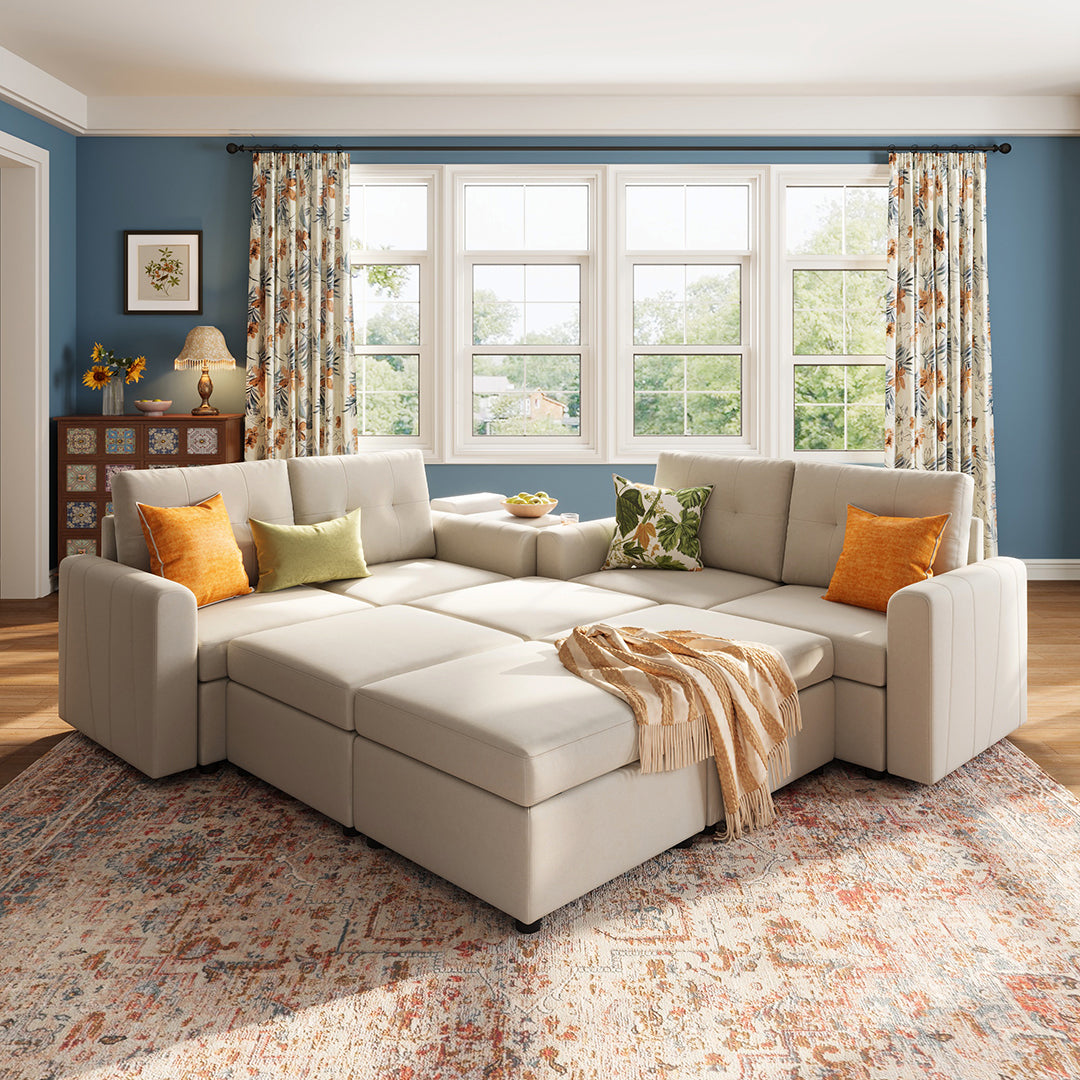Why does there have to be such a thing as a difference between modular and sectional couch? In the now-familiar ritual called buying a couch, you've probably been tossed two common terms around: modular and sectional. If you've ever spoken with a furniture retailer or expert, chances are they separate the two with a list of pros and cons for each, as if one were fundamentally different from another. But why would there be such a clear distinction? Are modular and sectional couches so very different? The thing is, they aren't. If anything, modular furniture is really just the natural evolution of the already popular sectional design. Let's take a closer look at why the division between modular and sectional couches is a weak one and why modular is really the future of sofa design.

The Misleading Difference: A Marketing Tactic?
Separation of the terms modular and sectional can be understood at one level by the fact that marketing will often create an artificial distinction as a means of categorizing similar products. Sectional couches are most often described and sold as a particular type of big couch with several pieces—usually two or three—fitting into either an "L" shape or "U" shape. They are designed to fit in specific living spaces, but their configurations are generally limited and static.
On the other hand, modular couches have been referred to as those types of furniture that are fully customizable: it can be rearranged, added on, or taken away in the individual sections or modules to fit any room or need.
While these differences sound distinct, they are not fundamentally so; sectionals are no more than a form of modular furniture with poor flexibility. They are the middle ground—a transitional product. The thing is, positioning sectionals as a category unto themselves might obscure the true advantages of modular sofas.

Sectional Couches: A Product of the Past
Sectionals were revolutionary in their time because they provided more versatility than the conventional one-piece couch. You could fit different spaces by changing the way pieces fit together, and many homes benefited from the adaptability that sectionals offered. However, sectionals have several drawbacks: they tend to be bulky, hard to rearrange, and fixed into their configurations.
It was a huge leap from the conventional couch into sectionals, but now they are also not the epitome of furniture design. In dynamic modern-day home settings, flexibility and adaptability are highly prized. Sectionals just don't offer the scope of personalization that today's consumers require. This makes them an archaic legacy of an earlier design philosophy. And the thought that sectionals differ from modular designs is from altogether previous thinking.
Modular Sofas: The Future of Flexibility
If sectionals were the past, then modular sofas are the future. The concept of a modular sofa is pretty simple: complete flexibility and adaptability. Each module in a modular sofa can be rearranged in any way that you choose—whether that's in the shape of a sectional, a straight sofa, or even breaking up the modules to create separate seating areas.
This flexibility in usage is important for modern day-living where one moves homes far more frequently, rooms are to be used for multiple purposes, and customization becomes a requirement.
While sectionals kicked off this modern wave, modular sofas take everything that they introduced and further it. The big difference? The possibilities with a modular sofa are endless. Want to give that corner sectional two loveseats? Easy as pie. Need seating for visiting guests? Slap on another module. A no-brainer for sure, modular sofas grow and evolve with your needs—endlessly overstepping the capabilities of a sectional's rigid framework.

Modular vs. Sectional: A False Dichotomy
So, why does the industry persist in a modular-section couches dichotomy? The reason may have something to do with marketing. By calling sectionals a category of their own, furniture retailers can continue maintaining a wider range of product lines and price points. For the consumer, this distinction means little.
The "sectional" is actually little more than an intermediate product—a sort of modular furniture that has limitations. When you actually think of sectionals as a version of modular design that is constrained, then that leaves no sense to even separate the categories whatsoever.
Why Modular Furniture Is the Future
The future of furniture design needs to be modular. As homes continue to evolve—whether due to shifting family dynamics, because remote work is on the rise, or simply tastes in design are changing—furniture needs to evolve right along with them. Modular sofas provide the ease of adaptability, scalability, and personalization that just can't be replicated with sectional couches.
Reason why modular will outrun sectional designs:
Flexibility: unlike other couches, the modular sofa can transform with your requirement. Whether it be for a new home or a revised living space, modular designs allow for really unlimited flexibility.
Customization: You can add, remove, or rearrange modules according to your unique taste, which is not allowed by traditional sectionals.
Space Efficiency: Modular designs fit any large and small space without being locked into a specific shape or configuration.
Future-Proofing: As consumer demands continue to shift toward greener and more sustainable living, and longevity, the fact that modular furniture can change with you means a longer-lasting, more valuable investment than you would get with static sectionals.
 Conclusion: It's Time to Move Beyond Sectionals
Conclusion: It's Time to Move Beyond Sectionals
At the end of the day, sectional couches were a move in the right direction when they first became popular years and years ago. But to continue hanging one's hat on the difference between sectional and modular furniture is to overlook the organic evolution toward absolute flexibility that modular designs provide. The very concept of a sectional as a product unto itself is archaic. Modular sofas represent not only the next step but the ultimate solution for lifestyles in the modern age. It is time now for this industry to embrace the future in the form of modular sofas, which guarantee freedom, flexibility, and innovation to consumers. The line that divides sectional couches from modular couches is superfluous, and it would be very fair to say that when it comes to a dynamic, evolving home, modular wins.





Leave a comment
All comments are moderated before being published.
This site is protected by hCaptcha and the hCaptcha Privacy Policy and Terms of Service apply.